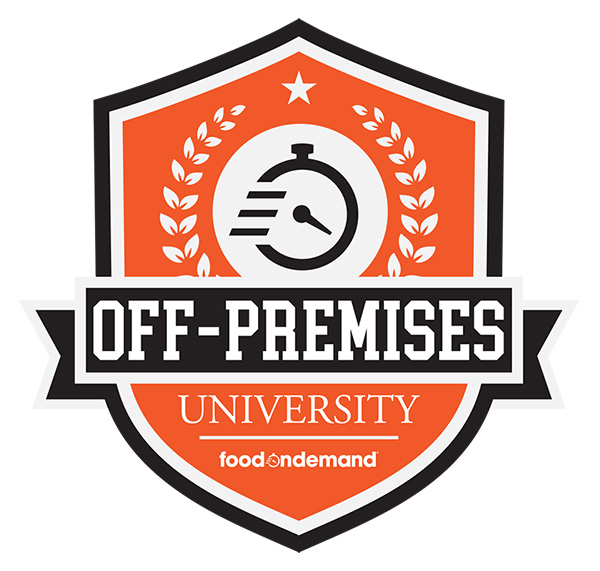Publicly traded restaurants like McDonald’s, Wendy’s and Wingstop are just a few of the mega brands that were early adopters of delivery. Others, like Chipotle, Starbucks and the Yum Brands trio of Taco Bell, KFC and Pizza Hut were later adopters. As part of its latest quarterly restaurant update, research firm Stephens dove into how delivery is working out for the biggest restaurant brands, with the included insight that many brands have evolved from focusing on delivery’s incrementality to now referring to it as a pillar “or even backbone” of future sales growth.
Stephens Analyst Will Slabaugh combed through commentary in the quarterly earnings reports of large-scale restaurants to zero in on the growth of delivery, and whether this still-new channel is helping enterprise-scale restaurants generate profits amid a traffic-starved restaurant industry. Slabaugh also honed in on the topic of incrementality, which is the industry lingo for whether delivery sales bring new customers to restaurants, or if they are cannibalizing in-restaurant traffic volumes.
“Since more universal adoption [of delivery] 12 to 18 months ago, we continue to hear arguments for incrementality without having seen broader traffic or same-store sales growth improve,” the report stated. This leads the Stephens team to believe that two things are at play: There’s a “share shift toward more scaled players” with big advertising budgets helping to grow the public’s awareness of delivery, and also that it’s still unclear if delivery is growing actual restaurant visits. Nevertheless, the company’s analysis suggests that third-party delivery’s growth spurt is far from finished.
“We believe it remains risky for most restaurants to stay out of the delivery game and expect 15 percent+ organic delivery growth to continue, despite fees that increasingly weigh on restaurant P&Ls,” the report’s summary concluded.
In the early adopter category, Stephens grouped McDonald’s, Wendy’s, Wingstop, The Cheesecake Factory and others. For McDonald’s, Slabaugh reported that the fast-food giant expects delivery to be a $4 billion business by the end of 2019, with delivery currently available in more than 9,000 U.S. locations.
“As the delivery industry grows and starts to mature (and likely consolidate), we expect that more and more of the larger chains will leverage multiple partners and create better deals for their franchisees,” the report read. “McD did this by recently adding DoorDash to its platform with an approximate 200 restaurant test in Houston as technological integrated is ensured before expansion across the U.S. average check sizes for delivery continue to run roughly 1.5x to 2.0x larger than the regular in-store average check.
For Wingstop, often cited as a national brand with perhaps the best potential for delivery, Stephens said the company’s ongoing rollout of delivery is helping fuel its “industry leading same-store sales growth in 2Q19 (+12.8 percent).” The report added that Wingstop previously said delivery is about 80 percent incremental, and “continues to see an average digital check that is $5 higher than its normal, non-digital average check of roughly $17.”
In the later adopter group, Yum Brands has accelerated its delivery rollout as part of its partnership and integration with Grubhub. While no specifics were given about Taco Bell, which recently ran national ads highlighting delivery, its “franchisees have seen an increase to traffic and check with positive customer feedback bringing light to the significant customer demand for the service.”
Delivery has proven especially fruitful for Chipotle, which Stephens says is a “key focal point” for the closely watched burrito brand.
“During 2Q19, CMG’s digital sales grew +99percent [year over year] to 18.2 percent of total sales, which was more than the company did in total digital sales during all of 2016,” the report said. Chipotle is still seeing a sales lift from delivery promotions, with little guest overlap between its in-house and third-party delivery partner apps.
For later adopters, like Olive Garden parent company Darden and the Texas Roadhouse system, delivery still hasn’t become compelling enough in the eyes of the executive teams to change strategy, which is notable for two of the most outspoken brands still avoiding delivery.
“Though the brand does not offer delivery, off-premises is strong and the company favors large-party catering at Olive Garden” with check sizes of at least $100. Stephens added that it views this strategy as a better business with higher check averages and strong customer satisfaction scores.
Texas Roadhouse has seen its to-go sales rise to approximately 7 percent of total sales, but it is still not offering third-party delivery in any way. Some recent store remodels have changed the front-of-the-house template to make room for a more streamlined to-go operation.
Visit Stephens.com for the full report.




